The importance of properly taking care of your feet is crucial to overall foot health, and it amplifies as the aging process occurs. Research has shown women to have approximately four times as many foot conditions than men, and this may be due to wearing high heels for many years, which may not allow adequate room for the toes to move about in. Aging may cause the feet to change sizes, and this may be a result of the feet becoming flattened and spread out as time evolves. Wearing shoes that do not fit properly can cause corns to form, and this is mainly because of increased friction the toes may bear. Additionally, a fungus may develop that is known as Athlete's foot, and this is extremely contagious and may be prevented by wearing appropriate shoes in public pools and surrounding areas. It is suggested to consult with a podiatrist for additional information on how to avoid potential foot ailments in elderly people.
Proper foot care is something many older adults forget to consider. If you have any concerns about your feet and ankles, contact Dr. Morris Stribling from Foot Care of Central San Antonio. Our doctor can provide the care you need to keep you pain-free and on your feet.
The Elderly and their Feet
As we age we start to notice many changes in our body, but the elder population may not notice them right away. Medical conditions may prevent the elderly to take notice of their foot health right away. Poor vision is a lead contributor to not taking action for the elderly.
Common Conditions
Susceptible Infections
Diabetes and poor circulation can cause general loss of sensitivity over the years, turning a simple cut into a serious issue.
If you have any questions please feel free to contact our office located in Central San Antonio, TX. We offer the newest diagnostic and treatment technologies for all your foot and ankle needs.
Read more about Taking Care of Elderly Feet Research has shown the importance of properly stretching the feet daily, and this is especially true of athletes who participate in running and jumping activities. When the feet are stretched through a proper warm up routine, injuries may be prevented. These injuries may include any tears or sprains that may occur as a result of performing running or jumping activities without initially stretching. Stretching may aid in loosening the Achilles tendon, which may prevent injuries such as Achilles tendinitis. Additionally, blood supply will increase when the muscles are properly stretched, and this may generally aid in the enjoyment of your chosen sport. If you would like additional information about the benefits of stretching the feet, consult with a podiatrist who can teach proper stretching techniques.
Research has shown the importance of properly stretching the feet daily, and this is especially true of athletes who participate in running and jumping activities. When the feet are stretched through a proper warm up routine, injuries may be prevented. These injuries may include any tears or sprains that may occur as a result of performing running or jumping activities without initially stretching. Stretching may aid in loosening the Achilles tendon, which may prevent injuries such as Achilles tendinitis. Additionally, blood supply will increase when the muscles are properly stretched, and this may generally aid in the enjoyment of your chosen sport. If you would like additional information about the benefits of stretching the feet, consult with a podiatrist who can teach proper stretching techniques.
Stretching the feet is a great way to prevent injuries. If you have any concerns with your feet consult with Dr. Morris Stribling from Foot Care of Central San Antonio. Our doctor will assess your condition and provide you with quality foot and ankle treatment.
Stretching the Feet
Being the backbone of the body, the feet carry your entire weight and can easily become overexerted, causing cramps and pain. As with any body part, stretching your feet can serve many benefits. From increasing flexibility to even providing some pain relief, be sure to give your feet a stretch from time to time. This is especially important for athletes or anyone performing aerobic exercises, but anyone experiencing foot pain or is on their feet constantly should also engage in this practice.
Great ways to stretch your feet:
Individuals who tend to their feet by regular stretching every day should be able to minimize foot pain and prevent new problems from arising.
If you have any questions, please feel free to contact our office located in Central San Antonio, TX. We offer the newest diagnostic and treatment technologies for all your foot care needs.
Read more about Stretching Your Feet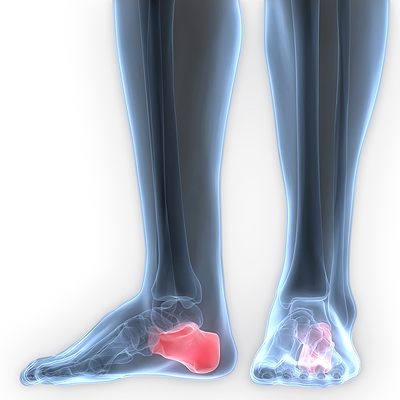 A condition that is known as a heel spur may present itself in two different categories. One of them is often referred to as heel spur syndrome and is characterized by bony protrusions that form on the bottom of the heel. They may look like a small hook and will grow toward the plantar fascia. This may develop as a result of repeated tearing of the heel bone lining, in addition to straining the ligaments and muscles of the foot. Patients may develop insertional Achilles tendonitis as a form of a heel spur, and this will typically occur where the heel bone connects to the Achilles tendon. If the Achilles tendon becomes irritated and inflamed, severe pain and discomfort may often accompany this condition. This type of heel spur may form as a result of decreased ankle motion and is known to develop gradually. If you are experiencing a heel spur, it is advised to seek the expert knowledge of a podiatrist who can properly treat this condition.
A condition that is known as a heel spur may present itself in two different categories. One of them is often referred to as heel spur syndrome and is characterized by bony protrusions that form on the bottom of the heel. They may look like a small hook and will grow toward the plantar fascia. This may develop as a result of repeated tearing of the heel bone lining, in addition to straining the ligaments and muscles of the foot. Patients may develop insertional Achilles tendonitis as a form of a heel spur, and this will typically occur where the heel bone connects to the Achilles tendon. If the Achilles tendon becomes irritated and inflamed, severe pain and discomfort may often accompany this condition. This type of heel spur may form as a result of decreased ankle motion and is known to develop gradually. If you are experiencing a heel spur, it is advised to seek the expert knowledge of a podiatrist who can properly treat this condition.
Heel spurs can be incredibly painful and sometimes may make you unable to participate in physical activities. To get medical care for your heel spurs, contact Dr. Morris Stribling from Foot Care of Central San Antonio. Our doctor will do everything possible to treat your condition.
Heels Spurs
Heel spurs are formed by calcium deposits on the back of the foot where the heel is. This can also be caused by small fragments of bone breaking off one section of the foot, attaching onto the back of the foot. Heel spurs can also be bone growth on the back of the foot and may grow in the direction of the arch of the foot.
Older individuals usually suffer from heel spurs and pain sometimes intensifies with age. One of the main conditions spurs are related to is plantar fasciitis.
Pain
The pain associated with spurs is often because of weight placed on the feet. When someone is walking, their entire weight is concentrated on the feet. Bone spurs then have the tendency to affect other bones and tissues around the foot. As the pain continues, the feet will become tender and sensitive over time.
Treatments
There are many ways to treat heel spurs. If one is suffering from heel spurs in conjunction with pain, there are several methods for healing. Medication, surgery, and herbal care are some options.
If you have any questions feel free to contact our office located in Central San Antonio, TX. We offer the latest in diagnostic and treatment technology to meet your needs.
Read more about How to Treat Heel Spurs There is a portion of tissue that is located on the bottom of the foot, which is referred to as the plantar fascia. The purpose of this tissue is to connect the heel bone to the toes. Severe pain and discomfort may develop in the heel area if the plantar fascia becomes inflamed. It may feel worse in the morning upon arising, and the pain may gradually diminish as the day progresses. This condition is known as plantar fasciitis, and there may be several reasons why this ailment may develop. Common causes may include being obese, which may exert excess weight on the heels, wearing shoes that fit incorrectly, in addition to standing on hard surfaces for extended periods of time. Research has shown there may be gentle stretches that can be performed, which may bring temporary desired relief. If you suspect you may have this uncomfortable condition, it is advised to seek the counsel of a podiatrist as quickly as possible who can perform a correct diagnosis and proper treatment techniques can begin.
There is a portion of tissue that is located on the bottom of the foot, which is referred to as the plantar fascia. The purpose of this tissue is to connect the heel bone to the toes. Severe pain and discomfort may develop in the heel area if the plantar fascia becomes inflamed. It may feel worse in the morning upon arising, and the pain may gradually diminish as the day progresses. This condition is known as plantar fasciitis, and there may be several reasons why this ailment may develop. Common causes may include being obese, which may exert excess weight on the heels, wearing shoes that fit incorrectly, in addition to standing on hard surfaces for extended periods of time. Research has shown there may be gentle stretches that can be performed, which may bring temporary desired relief. If you suspect you may have this uncomfortable condition, it is advised to seek the counsel of a podiatrist as quickly as possible who can perform a correct diagnosis and proper treatment techniques can begin.
Plantar fasciitis can be very painful and inconvenient. If you are experiencing heel pain or symptoms of plantar fasciitis, contact Dr. Morris Stribling from Foot Care of Central San Antonio. Our doctor can provide the care you need to keep you pain-free and on your feet.
What is Plantar Fasciitis?
Plantar fasciitis is the inflammation of the thick band of tissue that runs along the bottom of your foot, known as the plantar fascia, and causes mild to severe heel pain.
What Causes Plantar Fasciitis?
How Can It Be Treated?
While very treatable, plantar fasciitis is definitely not something that should be ignored. Especially in severe cases, speaking to your doctor right away is highly recommended to avoid complications and severe heel pain. Your podiatrist can work with you to provide the appropriate treatment options tailored to your condition.
If you have any questions please feel free to contact our office located in Central San Antonio, TX. We offer the newest diagnostic and treatment technologies for all your foot and ankle needs.
Read more about Plantar Fasciitis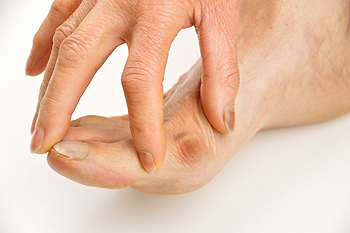 There are many types of foot conditions that may cause considerable pain and discomfort, which can lead to limited mobility. The foot is comprised of several bones, tendons and ligaments and if any one of these should endure an injury, the overall function of the body may be compromised. There are several types of foot pain most of the population may experience at some point in their lives. These may include having a corn develop, which is a small and yellowish area that generally forms on the top of the toes. This is typically the result of wearing shoes that fit incorrectly. Additionally, a bony protrusion that forms on the side of the big toe is referred to as a bunion and may develop from having arthritis or wearing improper footwear. If a fall has occurred, spraining or breaking the ankle may be a painful consequence. If you are experiencing any type of foot pain, it is advised to seek the counsel of a podiatrist who can properly treat these conditions.
There are many types of foot conditions that may cause considerable pain and discomfort, which can lead to limited mobility. The foot is comprised of several bones, tendons and ligaments and if any one of these should endure an injury, the overall function of the body may be compromised. There are several types of foot pain most of the population may experience at some point in their lives. These may include having a corn develop, which is a small and yellowish area that generally forms on the top of the toes. This is typically the result of wearing shoes that fit incorrectly. Additionally, a bony protrusion that forms on the side of the big toe is referred to as a bunion and may develop from having arthritis or wearing improper footwear. If a fall has occurred, spraining or breaking the ankle may be a painful consequence. If you are experiencing any type of foot pain, it is advised to seek the counsel of a podiatrist who can properly treat these conditions.
Foot Pain
Foot pain can be extremely painful and debilitating. If you have a foot pain, consult with Dr. Morris Stribling from Foot Care of Central San Antonio. Our doctor will assess your condition and provide you with quality foot and ankle treatment.
Causes
Foot pain is a very broad condition that could be caused by one or more ailments. The most common include:
Diagnosis
To figure out the cause of foot pain, podiatrists utilize several different methods. This can range from simple visual inspections and sensation tests to X-rays and MRI scans. Prior medical history, family medical history, and any recent physical traumatic events will all be taken into consideration for a proper diagnosis.
Treatment
Treatment depends upon the cause of the foot pain. Whether it is resting, staying off the foot, or having surgery; podiatrists have a number of treatment options available for foot pain.
If you have any questions, please feel free to contact our office located in Central San Antonio, TX. We offer the newest diagnostic and treatment technologies for all your foot care needs.
Read more about Foot Pain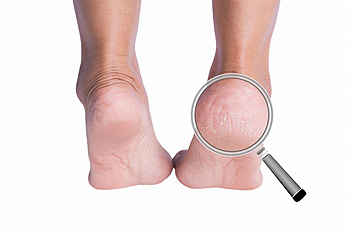 Patients who experience the painful condition known as cracked heels are often aware of the discomfort this condition may cause. There may be several reasons why people may develop cracked heels, including standing for extended periods of time, which may put excess pressure on the heels, wearing shoes that have an open back or a thin sole, or medical conditions such as eczema or dermatitis. Symptoms of this ailment may include deep cracks that are known as fissures, in addition to the formation of calluses as a result of the thickened skin on the heels. There are several effective treatments that may be implemented to bring moderate relief. These may include washing and drying the feet thoroughly, followed by utilizing a good moisturizer daily, wearing shoes that have adequate padding, and using a pumice stone, which may aid in exfoliating the dead skin. If you have developed cracked heels, it is suggested to speak with a podiatrist who can properly guide you to correct treatment options.
Patients who experience the painful condition known as cracked heels are often aware of the discomfort this condition may cause. There may be several reasons why people may develop cracked heels, including standing for extended periods of time, which may put excess pressure on the heels, wearing shoes that have an open back or a thin sole, or medical conditions such as eczema or dermatitis. Symptoms of this ailment may include deep cracks that are known as fissures, in addition to the formation of calluses as a result of the thickened skin on the heels. There are several effective treatments that may be implemented to bring moderate relief. These may include washing and drying the feet thoroughly, followed by utilizing a good moisturizer daily, wearing shoes that have adequate padding, and using a pumice stone, which may aid in exfoliating the dead skin. If you have developed cracked heels, it is suggested to speak with a podiatrist who can properly guide you to correct treatment options.
If the skin on your feet starts to crack, you may want to see a podiatrist to find treatment. If you have any concerns, contact Dr. Morris Stribling from Foot Care of Central San Antonio. Our doctor can provide the care you need to keep you pain-free and on your feet.
Cracked Heels
It is important to moisturize your cracked heels in order to prevent pain, bleeding, and infection. The reason cracked heels form is because the skin on the foot is too dry to support the immense pressure placed on them. When the foot expands, the dry skin on the foot begins to split.
Ways to Help Heal Them
Ways to Prevent Cracked Heels
If you are unsure how to proceed in treating cracked heels, seek guidance from a podiatrist. Your doctor will help you with any questions or information you may need.
If you have any questions, please feel free to contact our office located in Central San Antonio, TX. We offer the newest diagnostic and treatment technologies for all your foot care needs.
Read more about Solutions for Cracked Heels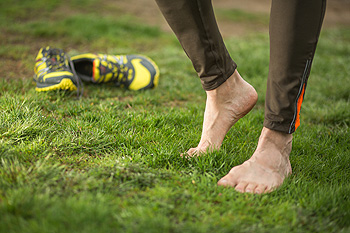 Many runners realize the pain and disappointment that is experienced if an injury should occur, which may inhibit the joy and ease of this sport or hobby. Research has shown that most injuries happen when the runner trains too intensely. Additionally, proper stretching techniques and warm-ups are beneficial to perform before each run, and this will loosen the muscles in the feet to ensure safe running. It’s important to wear the correct shoes that have adequate cushioning for this sport, and it may be necessary to replace them approximately every four-hundred miles. There are surfaces that are easier to run on, and these may include dirt trails or grass, which may better absorb the shock than if running on concrete. If you enjoy running frequently, it’s suggested to speak with a podiatrist for advice on how to prevent injuries caused by running.
Many runners realize the pain and disappointment that is experienced if an injury should occur, which may inhibit the joy and ease of this sport or hobby. Research has shown that most injuries happen when the runner trains too intensely. Additionally, proper stretching techniques and warm-ups are beneficial to perform before each run, and this will loosen the muscles in the feet to ensure safe running. It’s important to wear the correct shoes that have adequate cushioning for this sport, and it may be necessary to replace them approximately every four-hundred miles. There are surfaces that are easier to run on, and these may include dirt trails or grass, which may better absorb the shock than if running on concrete. If you enjoy running frequently, it’s suggested to speak with a podiatrist for advice on how to prevent injuries caused by running.
Exercising your feet regularly with the proper foot wear is a great way to prevent injuries. If you have any concerns about your feet, contact Dr. Morris Stribling of Foot Care of Central San Antonio. Our doctor will treat your foot and ankle needs.
How to Prevent Running Injuries
Many common running injuries are caused by overuse and overtraining. When the back of the kneecap starts wearing out and starts causing pain in your knee, this is commonly referred to as runner’s knee. Runner’s knee is a decrease in strength in your quadriceps and can occur if you’re not wearing properly fitted or supporting shoes. To prevent runner’s knee, focusing on hip strengthening is a good idea, as well as strengthening your quads to keep the kneecaps aligned.
What Are Some Causes of Running Injuries?
- One cause of a common running injury is called iliotibial band syndrome.
- Plantar fasciitis is also another common injury.
- Stress fractures can occur from overtraining, lack of calcium, or even your running style.
Best Ways to Prevent Running Injuries
- Wear footwear that fits properly and suits your running needs.
- Running shoes are the only protective gear that runners have to safeguard them from injury.
- Make a training schedule. Adding strengthening exercises as well as regular stretching can help keep you strong and limber and can lessen the possibility of injuries.
- Stretching keeps muscles limber; this will help you gain better flexibility.
If you have any questions please feel free to contact our office located in Central San Antonio, TX. We offer the newest diagnostic and treatment technologies for all your foot and ankle needs.
Read more about How to Prevent Running Injuries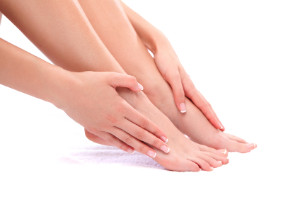 Most people have feet that are two different sizes. It’s important to use proper techniques for determining the correct shoe size, and this may aid in preventing uncomfortable foot conditions from developing. This often includes ensuring there is adequate room for the toes to move about freely in, and the feet will benefit by wearing shoes that bend at the ball of the foot. Research has shown the best time of day to purchase shoes is at the end of the day when the feet may be the largest. An accurate shoe measurement can be obtained by tracing your foot on a piece of paper, while wearing socks that you would most likely wear daily. When the foot is traced with a pencil that is held in an upright position, the measurement may be more accurate than if the pencil is angled as this process occurs. After completing this, the shoe size to be determined is by the foot that is the largest and longest. If you would like additional information about how to properly measure your feet so the correct size shoes can be worn, it’s suggested to speak with a podiatrist.
Most people have feet that are two different sizes. It’s important to use proper techniques for determining the correct shoe size, and this may aid in preventing uncomfortable foot conditions from developing. This often includes ensuring there is adequate room for the toes to move about freely in, and the feet will benefit by wearing shoes that bend at the ball of the foot. Research has shown the best time of day to purchase shoes is at the end of the day when the feet may be the largest. An accurate shoe measurement can be obtained by tracing your foot on a piece of paper, while wearing socks that you would most likely wear daily. When the foot is traced with a pencil that is held in an upright position, the measurement may be more accurate than if the pencil is angled as this process occurs. After completing this, the shoe size to be determined is by the foot that is the largest and longest. If you would like additional information about how to properly measure your feet so the correct size shoes can be worn, it’s suggested to speak with a podiatrist.
It is important to find shoes that fit you properly in order to avoid a variety of different foot problems. For more information about treatment, contact Dr. Morris Stribling from Foot Care of Central San Antonio. Our doctor will treat your foot and ankle needs.
Proper Shoe Fitting
Shoes have many different functions. They cushion our body weight, protect our feet, and allow us to safely play sports. You should always make sure that the shoes you wear fit you properly in order to avoid injuries and deformities such as: bunions, corns, calluses, hammertoes, plantar fasciitis, stress fractures, and more. It is important to note that although a certain pair of shoes might be a great fit for someone else, that doesn’t mean they will be a great fit for you. This is why you should always try on shoes before buying them to make sure they are worth the investment. Typically, shoes need to be replaced ever six months to one year of regular use.
Tips for Proper Shoe Fitting
The shoes you buy should always feel as good as they look. Shoes that fit properly will last longer, feel better, and improve your way of life each day.
If you have any questions, please feel free to contact our office located in Central San Antonio, TX. We offer the newest diagnostic and treatment technologies for all your foot care needs.
Read more about How to Get a Proper Shoe Fit